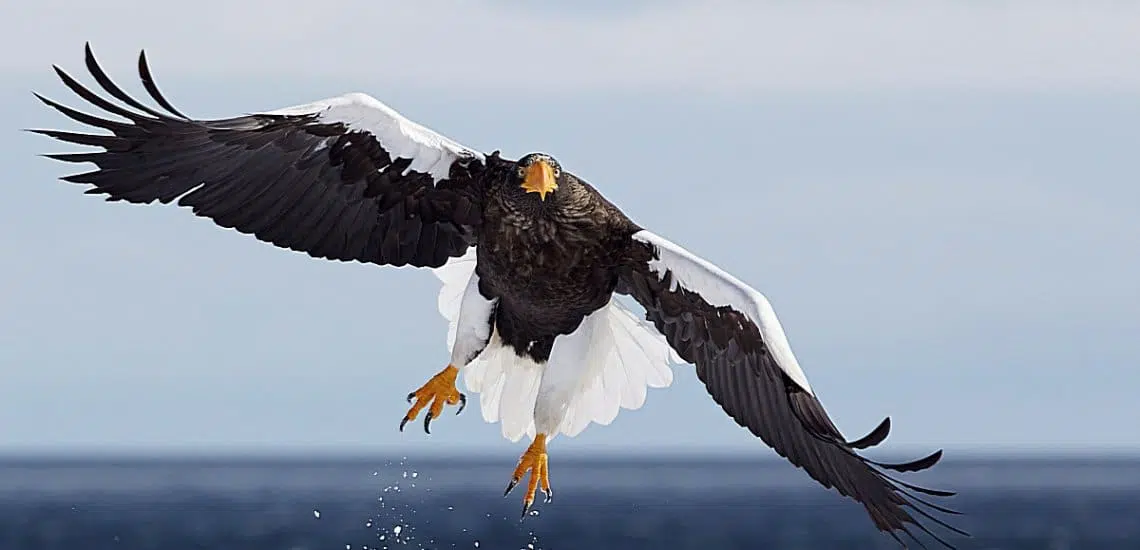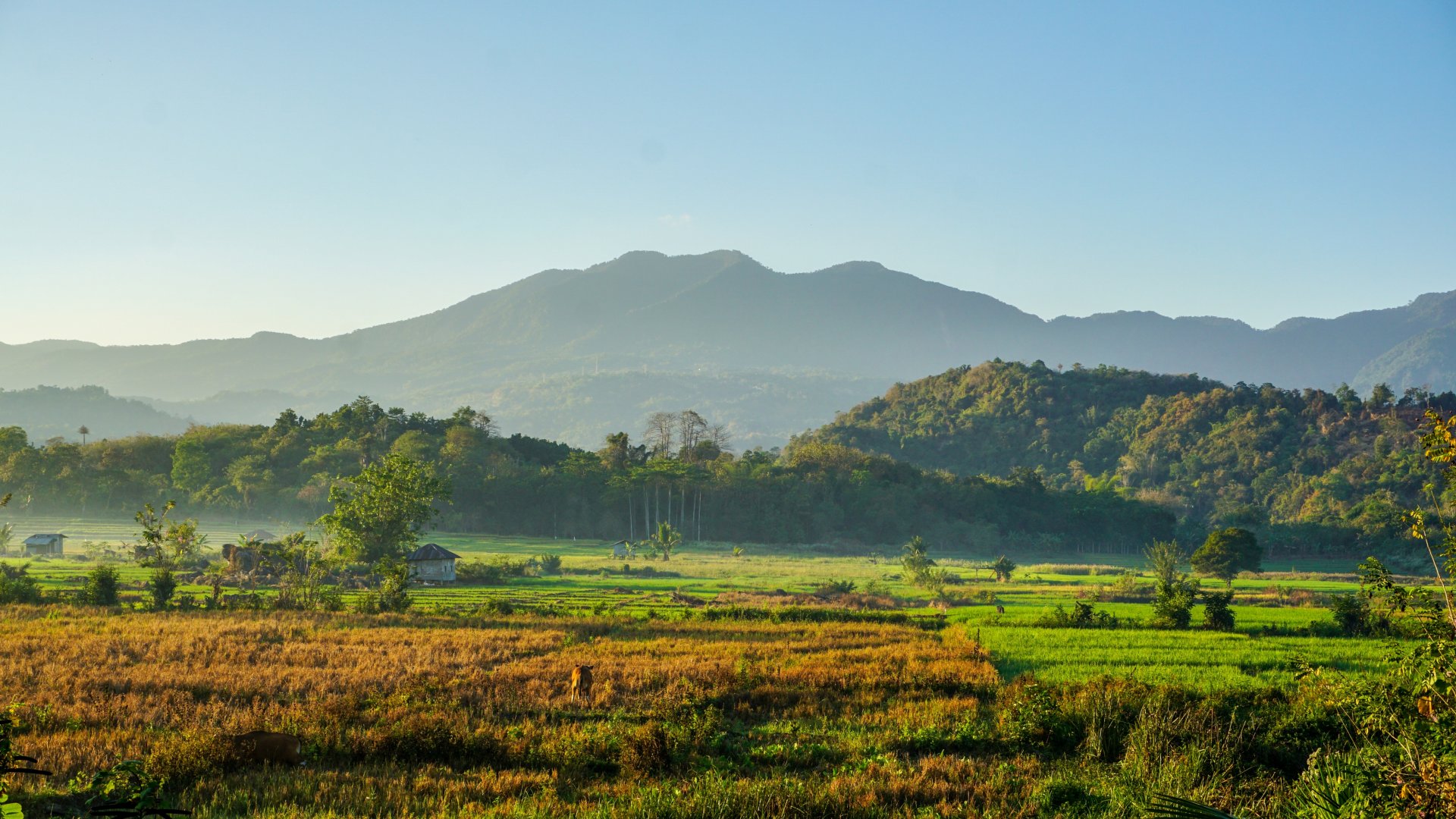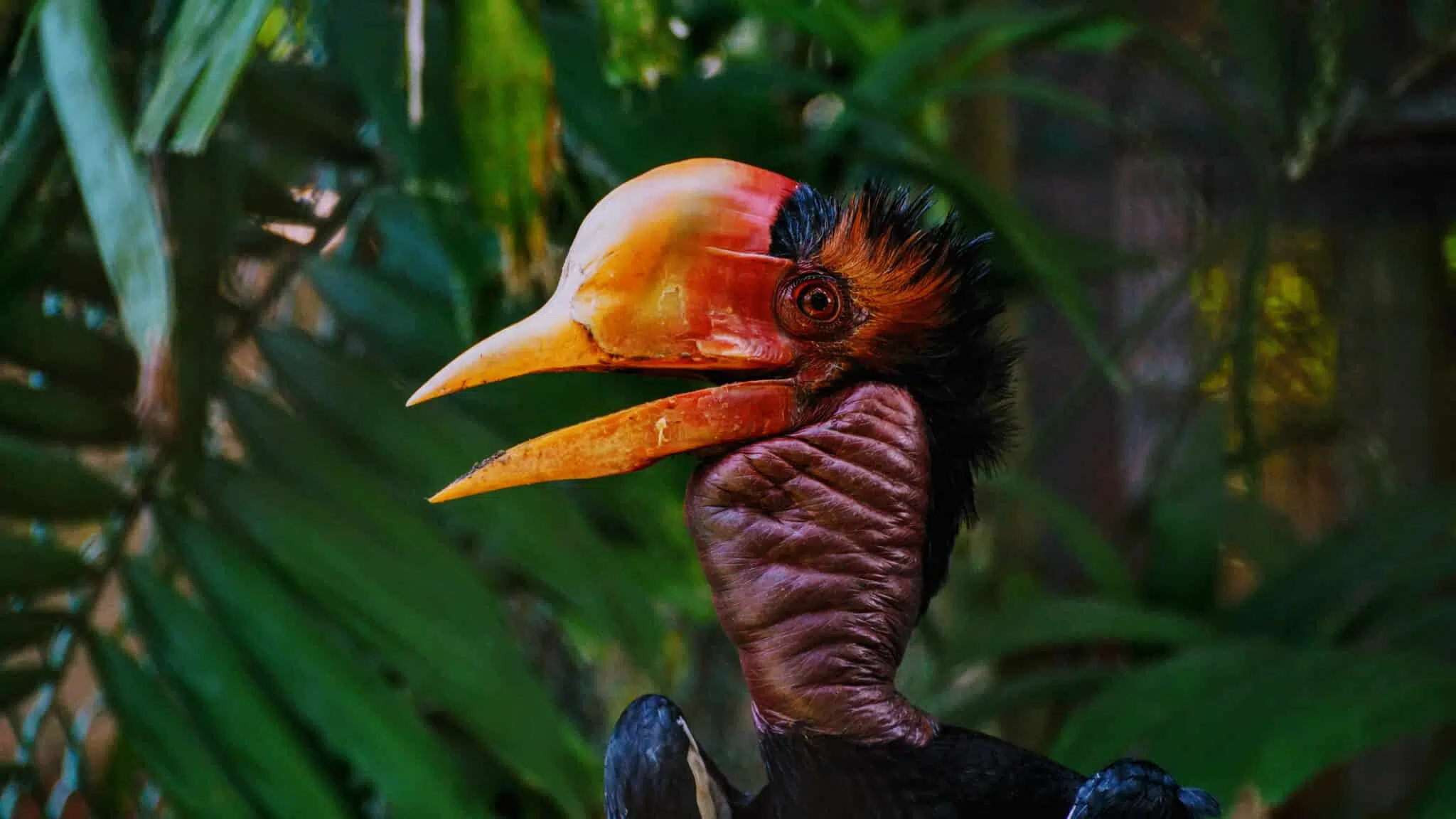King of towers
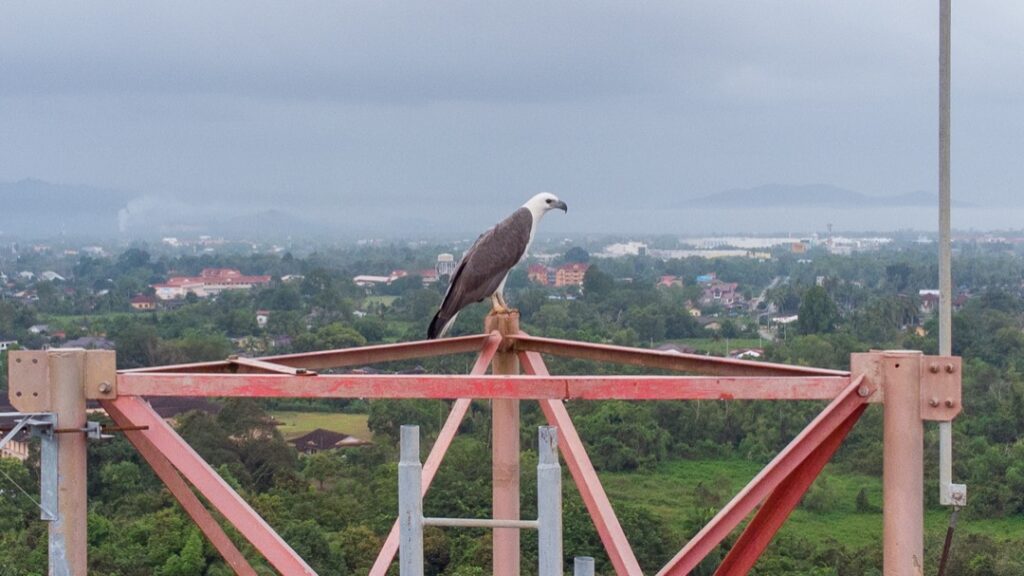
The majestic White-bellied Sea-eagle naturally nests high up on tall, old trees. However, as these have become increasingly rare in some areas, Malaysian Nature Society (MNS) has increasingly observed them seeking refuge on man-made structures, posing danger to the birds.
By Mr Shanmugaraj Subramaniam & Mr. Anuar McAffee from the Malaysian Nature Society (MNS)
In April 2022, staff from the Malaysian Nature Society, MNS (BirdLife in Malaysia) noticed that there was an increasing number of raptor nests spotted on telco towers in Terengganu, Malaysia. The committee member of the Terengganu Branch of MNS, Anuar McAffee, felt compelled to write to the press about the plight of a majestic coast dwelling eagle, after observing the dangerously built nests on high-rise pylons -some with heights of 70 meters, while facing the stormy winds from the South China Sea. With this human-wildlife dilemma at hand, MNS and partnering telecommunications companies turn to BirdLife partners around the globe for ideas.
McAffe’s main concerns centred around the raptors’ survival on man-made structures. He also highlighted how building nests to shelter a new cycle of life took a painstaking effort from the birds, thus the nests should not be harmed. His article not only drew attention from nature lovers and birders, but also from the large telco companies that bear a similar responsibility to address raptor nesting and that have an understanding about the behaviour driving such occurrences.
In his article, McAffee states: “In Terengganu, Malaysia, monsoon season is when birds like the White-bellied Sea-eagle begin to build their nests. This is often seen along the coast, at offshore islands, and near inland waterways and lakes. Known locally as Helang Laut, the species falls under the totally protected species category of the Malaysian Wildlife Conservation Act 2010. While eagles traditionally constructed their large nests on tall trees, more and more of them are now using man-made structures instead.”
Header image: A White-bellied Sea-eagle perched high on a tower © Anuar McAffee/MNS
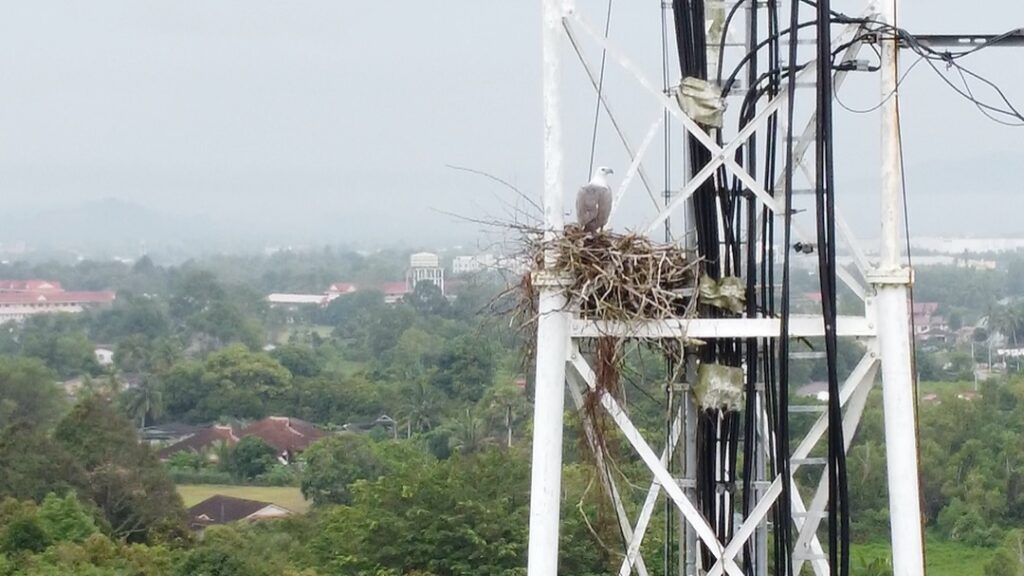
It’s the height that matters
One of the structures where White-bellied Sea-eagles have been spotted building nests, is atop telco towers along the forest edges. The issue of birds nesting on top of telco towers stems from deforestation. In a healthy forest, White-bellied Sea-eagles would typically nest high on the tallest trees. This behaviour is significant as raptors glide in the open air to survey their territory and search for prey.
Mr. I. S. Shanmugaraj Subramaniam, Executive Director of MNS notes that, “The tower mimics the raptor’s preference of a tree. An emergent tree may rise right up to 60 to 70 meters. This predator’s instinct is inclined to prefer the vantage point at this level to look out for prey, and nest away from the lurking dangers of other wildlife.” The giant emergent trees used for nesting are generally found deep in the primary rainforests. Along forest edges, there are fewer of these giant trees, so the birds seek out other tall structures like the telco towers. Telco towers themselves exceed the 60-meter height and have a sheltered platform at the top, providing a seemingly excellent location for birds to build nests.
As more development encroaches into forests, it will continue to divide landscapes and increase the amount of emergent-bare forest edges. McAfee further explains that this will cause occurrences of birds and other wildlife using nearby tall structures to be more common in the future. Even as technology continues to develop and telco towers are transferred to satellites, wildlife will still utilise alternative infrastructure in a similar fashion. Shanmugaraj has already seen this happening with other species, “We have now observed herons on electric towers. I have even seen that maintenance work had to be stopped during the installation work along the electric towers and light poles.”
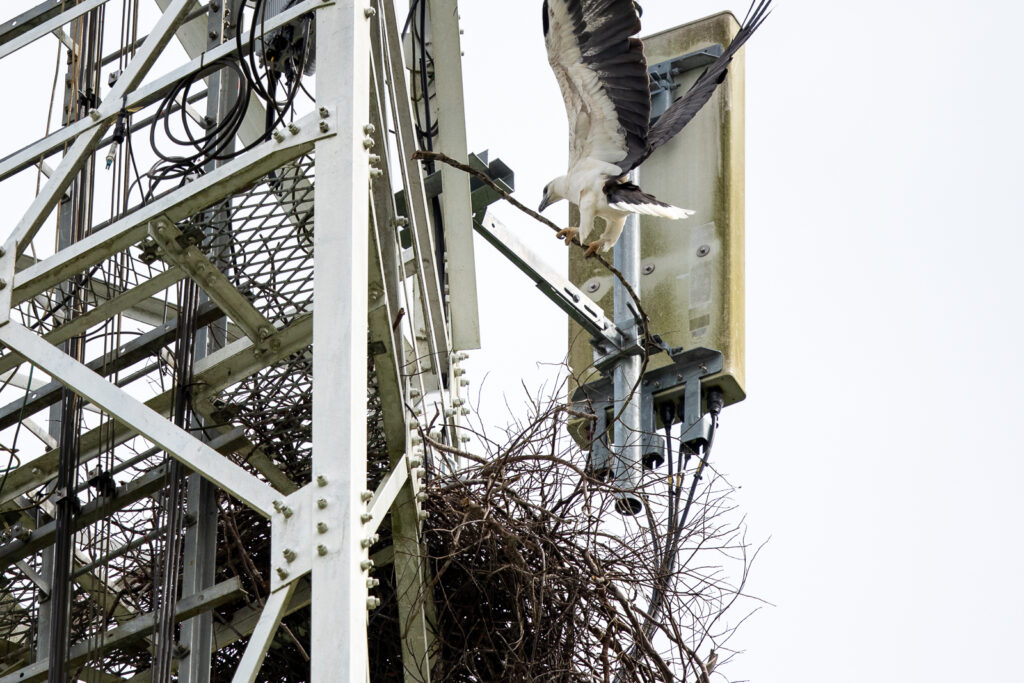
To remove or not to remove
The bird’s nests spread over a large area and are tangled into the cables of the towers. At times, this affects the tower’s functional purpose. To return the towers functionality, the nests must be removed, a task that is incredibly arduous and often poses dangers to both humans and wildlife.
McAffee shared another dilemma that arises when attempting to remove nests, explaining that White-bellied Sea-eagles are very territorial, “Once they have chosen a site to nest, they will return to it year after year, rebuilding its nest at the same spot even if it is removed previously”. Because of this behaviour Anuar notes that nest removal alone is an unsustainable option.
Disruption of the nesting and breeding sites of these birds also poses major issues for the telco companies and their employees. There have been many instances where technical staff clearing the nesting sites atop the towers were attacked by the raptors swooping down on them, especially if there were eaglets in the nest.
Leaving the nests alone in the towers is not a viable option either as they disrupt the telecommunications coverage to the public. This creates a problem for communities in rural areas who are highly dependent on communication to the rest of the country and region. For the telco companies, the decision to work with MNS and Birdlife International to address this major concern was not a simple step but they felt that protecting the welfare and safeguarding of this species was a priority that required serious attention.
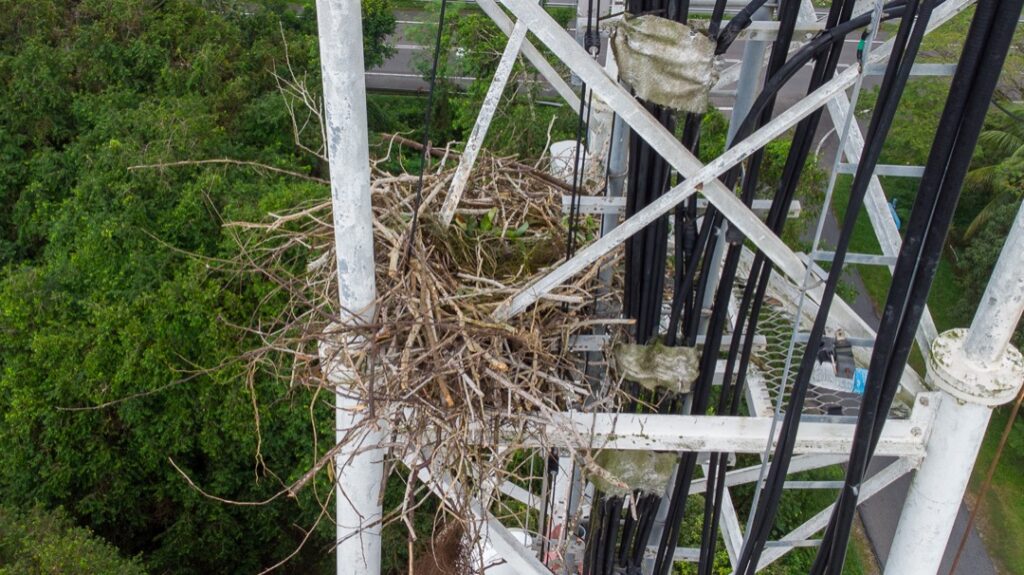
What can be done?
As much as humans like to wish for easy solutions, this predicament cannot simply be solved by merely planting trees. The growth of an emergent tree takes an extensive period of years, perhaps 60 or more, just to be tall enough to provide refuge and attract the lifeforms dependent on it. However, it only takes one or two weeks to construct a pylon for a telco tower. As such, MNS, along with the Malaysian Wildlife Department and the telecommunication company, EDOTCO Group Sdn Bhd, have been constantly to find alternate solutions to this issue. The groups continue to find ways to minimize human-wildlife conflicts and develop possible mitigation alternatives.
Today, critical planning is required prior to installing the telco towers. It may be necessary to create tailor-made pylons resembling emergent trees that accommodate certain sections to provide refuge for wildlife such as nesting birds. But what features attracts the birds to build their nests? And what other wildlife behaviour and patterns do we need to take into consideration? These are some of the pressing questions that the stakeholders in the East Coast Malaysian State are seeking to solve for this raptor nesting issue.
Alongside other BirdLife partners, Malaysian Nature Society and EDOTCO hope to come up with creative and safe solutions for wildlife across the region and worldwide. “They want to work with our birdlife family!” MNS Executive Director I.S Shanmugaraj, voiced optimistically. He is also keen to hear from other BirdLife partners about comparisons of different bird species data to other key habitat protection sites and lessons learnt around the globe. MNS hopes that by working together with the 119 Birdlife country partners, each organization can exchange a wealth of information about birds and safeguarding in their own key habitat sites. The Malaysian Nature Society takes pride in the White-bellied Sea-eagle and will do everything it can for this major icon and symbol for several Malaysian states
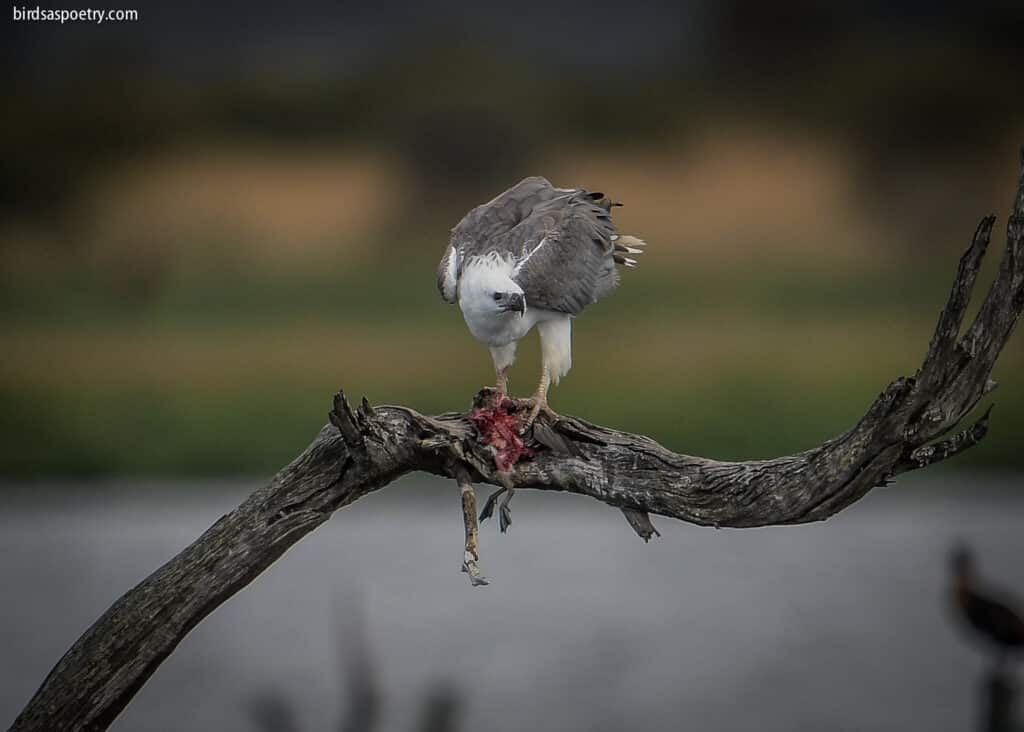
Have you or your organisation worked on solutions
to nesting on man-made structures? The Malaysian
Nature Society wants to hear from you!
Contact [email protected]
